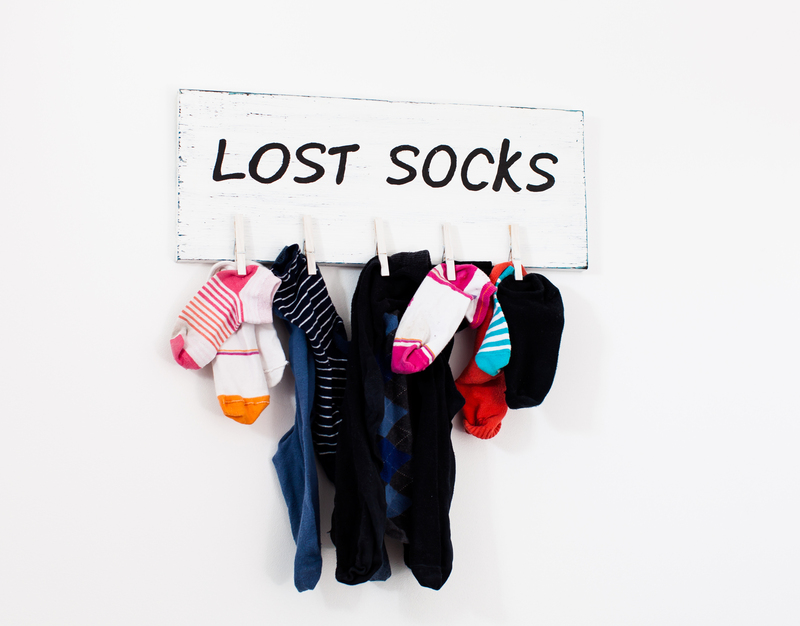Essential Tips for Achieving a Mold-Free Bathroom
Posted on 26/08/2025
Essential Tips for Achieving a Mold-Free Bathroom
Dealing with bathroom mold can be a frustrating and ongoing battle for homeowners. The high humidity, poor ventilation, and frequent water exposure create the perfect breeding ground for mold spores. However, achieving a mold-free bathroom isn't just a dream--it's entirely possible with the right preventive measures and cleaning techniques.
Whether you're struggling with stubborn black spots on your tiles or want to maintain a healthier living environment, this comprehensive guide offers essential tips for a mold-resistant bathroom. Read on to discover proven strategies, preventive steps, and ongoing maintenance tips for a sparkling, mold-free space.
Why Mold Grows in Bathrooms
The conditions in bathrooms are ideal for rapid mold growth. Here's why:
- High Humidity: Hot showers and baths create excess moisture in the air.
- Poor Ventilation: Airborne moisture lingers longer without proper airflow.
- Constant Water Exposure: Leaky fixtures or unsealed surfaces provide a continuous water source for mold.
- Organic Materials: Soap scum, fabric towels, and wood attract mold growth.
Understanding these conditions is vital for constructing your game plan to keep bathrooms free of mold.

Proven Ways to Prevent Bathroom Mold
To achieve a mold-free bathroom, proactive prevention is key. Below are essential steps for keeping mold out of your bathroom for good:
1. Improve Ventilation
- Use Exhaust Fans: Run a high-quality bathroom fan during and for at least 20-30 minutes after showers and baths.
- Open Windows: When weather allows, crack open windows to allow fresh air in.
- Install a Dehumidifier: If humidity stays high, a bathroom dehumidifier can work wonders.
Tip: Regularly clean your exhaust fan to ensure optimal function.
2. Wipe Down Wet Surfaces
- After showers, use a squeegee or microfiber cloth to wipe walls, doors, and tiles.
- Remove water droplets from mirrors, countertops, and faucets.
Drying surfaces quickly removes the moist environment mold needs to grow.
3. Fix Leaks and Plumbing Issues
- Inspect under sinks, around bathtubs, and behind toilets frequently.
- Repair dripping faucets, running toilets, or leaking pipes as soon as possible.
Even a small leak provides ongoing moisture that encourages mold to take hold.
4. Limit Soft Furnishings and Clutter
- Opt for fast-drying synthetic shower curtains instead of fabric.
- Hang towels to dry immediately, and launder them regularly.
- Keep bathtubs and shower stalls free of unused products and sponges.
5. Upgrade to Mold-Resistant Materials
- Install mold-resistant drywall (greenboard or cement backer board) in remodels.
- Choose mildew-resistant paint for walls and ceilings.
- Use silicone-based caulk, which resists mold better than traditional latex caulk.
Deep Cleaning Techniques for a Mold-Free Bathroom
Routine cleaning is a crucial component of bathroom mold prevention. Use these methods to eliminate existing mold and deter new growth:
1. Clean grout and tiles regularly
- Scrub grout lines with a stiff brush and a mixture of baking soda and water.
- For stubborn black mold, use a paste of vinegar and baking soda or a commercial mildew cleaner.
- Seal grout annually to make it less porous and more resistant to mold.
2. Disinfect Shower Curtains and Liners
- Wash plastic curtains and liners in the washing machine with a cup of vinegar and mild detergent every month.
- Replace heavily stained or damaged curtains to avoid lingering mold spores.
3. Clean Drains and Traps
- Hair and soap scum build-up encourage mold in drains. Clean regularly using a drain snake or brush.
- Pour a mix of boiling water, baking soda, and vinegar down the drain monthly to control mildew bacteria.
4. Target Hidden or Hard-to-Reach Areas
- Move storage shelves, hampers, and toilet tanks to check for hidden mold.
- Use an old toothbrush and diluted bleach solution to spot-treat corners and crevices.
Long-Term Strategies for a Mold-Resistant Bathroom
Beyond day-to-day cleaning, there are long-term solutions that can help ensure your bathroom remains mold-free for years to come:
Insulate Pipes and Surfaces
- Insulate cold water pipes to prevent condensation, which can drip and encourage mold growth.
- Condensation on exterior walls? Add insulation or consult a contractor about vapor barriers.
Ensure Proper Sloping and Drainage
- Shower floors, countertops, and window sills must be sloped to avoid standing water.
- Ensure the caulking around bathtubs and sinks is secure to prevent water seepage.
Upgrade to Mold-Resistant Fixtures
- Install bath fans with built-in humidity sensors for hands-free moisture control.
- Consider touchless faucets and automatic soap dispensers to reduce splash and standing water on counters.
Regularly Inspect for Early Signs of Mold
- Check for musty odors or discoloration, especially behind furniture or in closets.
- Address any water stains or bubbling paint immediately.
Natural Solutions to Prevent Bathroom Mold
If you prefer to avoid harsh chemicals in your cleaning routine, there are plenty of natural solutions for preventing and removing bathroom mold:
- White Vinegar: Spritz full-strength vinegar onto tile, grout, and glass, let sit, then scrub and rinse.
- Baking Soda: Combine with water to form a mild abrasive paste for surfaces and grout lines.
- Tea Tree Oil: A powerful natural fungicide--add a teaspoon to a spray bottle of water and apply to problem areas.
- Lemon Juice: The acidity helps kill bacteria and leaves a fresh scent.
Tip: Always test natural remedies on an inconspicuous area first to ensure no discoloration.
How to Keep Bathroom Mold Away: Daily and Weekly Maintenance
Consistency is critical when it comes to achieving a bathroom without mold. Integrate these habits into your routine:
- Daily: Wipe down surfaces, squeegee showers, hang towels, and open windows or run the fan.
- Weekly: Deep clean showers and sinks, launder all towels and mats, and check for new leaks or moisture spots.
- Monthly: Inspect the caulk and grout, clear out clutter, and deep clean under and behind fixtures.
Staying vigilant is the best way to maintain a mold-resistant bathroom environment.

Frequently Asked Questions: Mold in Bathrooms
How often should I clean my bathroom to prevent mold?
Ideally, basic wipe-downs should be done daily with a deeper clean once a week. Don't forget to tackle the less visible areas monthly!
What are the first signs of bathroom mold?
Look for black, green, or brown spots on tiles, grout, or ceilings. A musty odor is also a common indicator of hidden mold.
Is it safe to use bleach to clean bathroom mold?
While bleach can kill surface mold, it may not penetrate porous materials. For deep cleaning, combine it with other methods or opt for commercial mold removers labeled safe for bathrooms.
Can mold in the bathroom make you sick?
Yes. Mold exposure can trigger allergic reactions, respiratory problems, and other health issues--especially in children, the elderly, and those with compromised immune systems.
What if I have persistent mold problems?
Chronic mold issues may require professional assessment, as underlying structural or plumbing problems could be at fault.
Final Thoughts: Achieving and Maintaining a Mold-Free Bathroom
A spotless, healthy bathroom is achievable! By understanding the causes of mold growth, implementing strong ventilation, keeping surfaces dry, and adopting smart cleaning strategies, you can win the war against bathroom mold.
- Monitor humidity levels closely--so your bathroom stays mold-resistant year-round.
- Address leaks and fixes promptly--to eliminate sources of unwanted moisture.
- Choose materials and products wisely--to further discourage mold growth.
- Stay consistent--so mold doesn't stand a chance in your home.
Use these essential tips for keeping your bathroom mold-free as a handy guide for your home cleaning and maintenance routines. With a little extra diligence, you'll keep your bathroom sparkling, safe, and entirely free from mold--now and for years to come!




